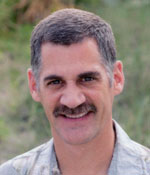
 One sunny day in Okinawa, Japan, I walked into my F-15 squadron and was immediately met by the operations officer saying, “Go pack an overnight bag. We need you to fly a jet up to Osan, Korea, this afternoon. We'll check weather and file your flight plan.” Fortunately I lived on base so I was able to get home quickly, throw a few things into a bag, and return to the squadron. When I returned, someone handed me a folder and told me I was filed, the weather at my destination was VFR, and all the paperwork was in the folder. So off I went to the jet.
One sunny day in Okinawa, Japan, I walked into my F-15 squadron and was immediately met by the operations officer saying, “Go pack an overnight bag. We need you to fly a jet up to Osan, Korea, this afternoon. We'll check weather and file your flight plan.” Fortunately I lived on base so I was able to get home quickly, throw a few things into a bag, and return to the squadron. When I returned, someone handed me a folder and told me I was filed, the weather at my destination was VFR, and all the paperwork was in the folder. So off I went to the jet.
Once out of Okinawa's airspace, most of the trip was pretty silent on the radios over the Pacific Ocean. I enjoyed the quiet to soak in the view of the sun reflecting on the deep blue waters below from a perch at FL350. Nearing 100 miles from my destination, I knew it was about time to start the arrival checks that were ingrained in my head from pilot training, starting with a check of the weather. But since it was VFR I just did a quick review of the VFR map for my VFR tactical arrival and also accomplished my descent check.
With about 80 miles to go, I finally switched to approach frequency and tried to check in. But for some reason the radios were super busy with traffic trying to get into Osan and nearby Suwon. I heard a few planes “cleared for the localizer approach…” and figured there must be a cloud deck they needed to penetrate before they could fly their VFR tactical patterns. Then it hit me: Maybe I should check ATIS. A quick tune-in on my aux radio told me that Osan was reporting weather at 500/2 with rain showers and a wet runway. How could I be so dumb? So much for my VFR arrival plan.
I then realized that I was way behind on getting set up for arrival. Through a mad scramble, I found my approach book, reviewed the approach plate, got my navaids set up, and the next thing I knew I was intercepting the localizer 12 miles out from the field. I was a little fast on final, landed a little long, and with standing water on the runway (not just wet) it took me a little while to get slowed down. But I made it safely. After that I have never broken the “100-mile rule” again—except in my Cessna, where I use 50 miles as my point to start my arrival checks.
In today's general aviation cockpits, many of us have onboard textual weather capability that didn't exist when I made that flight to Korea. So our advantage is the ability to check weather even when out of range of the ATIS broadcast. We also can use ATC, flight service, and even HIWAS to clue us in on the weather at our destination. The point is, at some distance we need to turn off our XM Radio, or stop that conversation with our passengers, or stop sightseeing, and start preparing for our arrival, even when we think it is VFR. What is your distance?
Larry Brown of Colorado Springs, Colo., is a retired Air Force F-15 pilot who is using the lessons he learned as a fighter pilot as a GA pilot in his Cessna P210. Brown, who has 2,600 hours total time during his 32 years of flying, also was an instructor pilot and flight examiner in the Air Force T-38 and instructor pilot in the T-52, the military's version of GA's Diamond DA40.
We are testing this new biweekly series. Tell us what you think!



